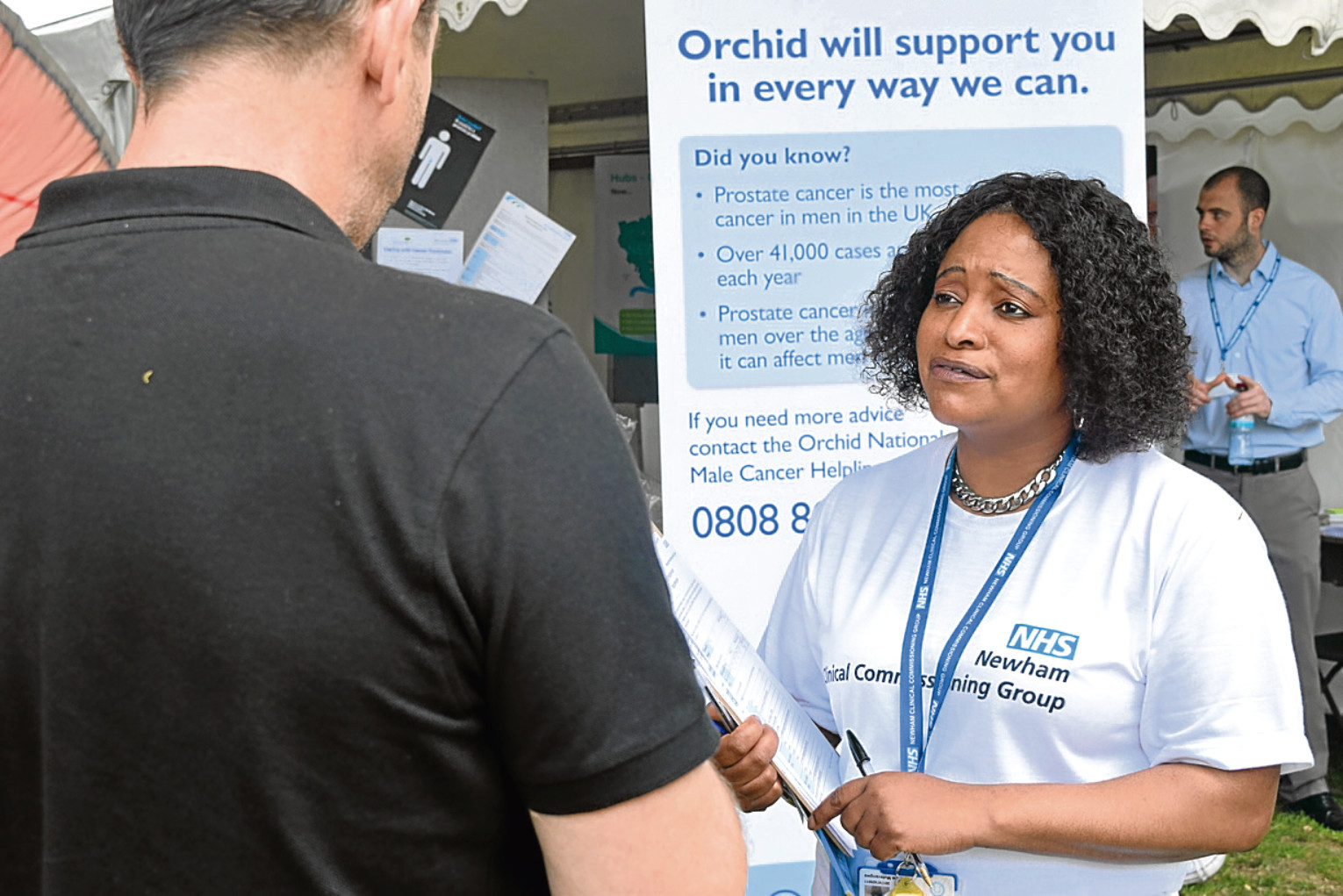
EVERY year more than 50,000 men in the UK will be diagnosed with prostate, testicular and penile cancer.
Of these 47,300 will be diagnosed with prostate cancer, and 2,200 with testicular cancer.
But how often do you hear about them? Are we still embarrassed about all things “down below”?
“It’s that, yes, but we’re seeing more and more celebrities and other men representing some of the cancers making a big difference,” says Katherine Mutsvangwa, a Male Cancer Information Nurse with Orchid, the male cancer charity.
“In this country, we’ve had footballers John Hartson and Alan Stubbs speak openly about having testicular cancer but Lance Armstrong has made the biggest impact, winning the Tour de France despite his diagnosis.
“Him talking about testicular cancer was heard by a lot of young men, and now we’re seeing a lot more of that around prostate cancer, too.
“A celebrity talking openly about testicular cancer can have a massive impact, perhaps more so than someone talking about many other conditions.
“Someone like Jeremy Kyle talking about his testicular cancer is important as they’re seen to bounce back to carrying on with their lives, and I think that has given a strong message to say that cancer’s not a death sentence, that if dealt with early on, it has good survivorship.”
Part of the problem, Katherine continues, is men simply not wanting to go to the doctor.
“They want to be seen as brave and bold, not wimpy, and there are only a few men who will go to the doctor with worries,” she says.
“Generally, if there is nothing physically affecting men, they won’t do anything about it unless someone nags them!
“More young men now, because they want to keep fit and there is more understanding, especially around testicular cancer, are checking themselves and going to the doctor.
“And that’s the approach we’re taking with prostate cancer, too, from the perspective of young men talking to their dads about it.
“Prostate cancer tends to affect the older generation and there are men who’ve had prostate cancer for more than 10 or 15 years.
“We know there are men who might not be in remission as such but who are living with prostate cancer, and the message to them should be that if it’s picked up earlier, the disease can be controlled and the risk of it spreading is much reduced.
“And it’s not as painful than if it’s left untreated and controlled.
“But remember we’re talking about 98% of men surviving testicular cancer, which compares very favourably with other cancers, while if you look back only as far as the 70s, about 80% were dying of testicular cancer.
“So the awareness of signs and symptoms, and encouraging men to present earlier, is making a big difference in survivorship.”
That survival rate should be shouted from the rooftops but although things are improving, many are still reluctant to talk about male cancers.
“I meet a lot of men who don’t want it known they’ve got prostate cancer,” says Katherine.
“There can be a stigma attached to the symptoms, such as erectile dysfunction, which affects the majority to some extent.
“That can really matter. They worry they’ll be seen as less of a man maybe.
“The majority of men with prostate cancer, although they survive it, struggle to live with the effects and of the treatment.
“We recognise these problems but we are only starting to tackle the effects by helping people to support and self-manage and live with the symptoms, some of which can’t be got rid of completely.”
We’ll quite happily talk about women self-checking for breast cancer but with male cancer, a light-hearted approach is needed such as the “Check Your Chaps” campaign.
“Often with men, to get them to take something seriously you have to add humour to it!” laughs Katherine.
“Women will sit in groups and talk seriously about things like breast cancer but it’s difficult to get a group of men to sit around the table and talk about any of these illnesses or their effects.
“That’s why linking up with rugby or football clubs helps, finding something they can relate to so it’s seen as something normal.
“We often have to educate men about their own body — because you can’t see it, you’d be surprised by the number of men who don’t know where the prostate is or what it is.
“And often you have to teach them how to do a testicular self-examination and tell them what they are looking for.”
For more information, visit www.orchid-cancer.org.uk or phone their helpline on 0808 802 0010.

Enjoy the convenience of having The Sunday Post delivered as a digital ePaper straight to your smartphone, tablet or computer.
Subscribe for only £5.49 a month and enjoy all the benefits of the printed paper as a digital replica.
Subscribe